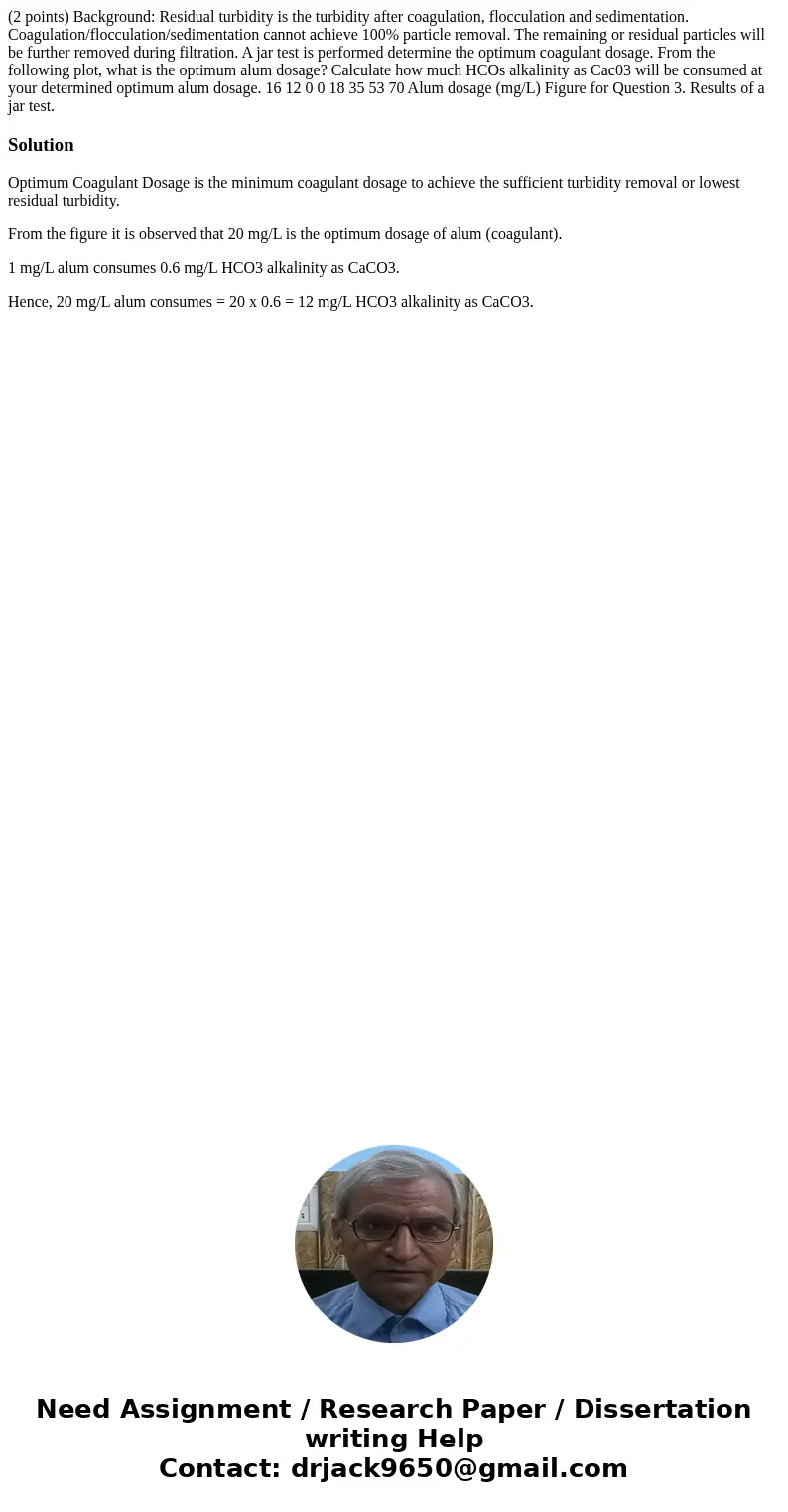2 points Background Residual turbidity is the turbidity afte
(2 points) Background: Residual turbidity is the turbidity after coagulation, flocculation and sedimentation. Coagulation/flocculation/sedimentation cannot achieve 100% particle removal. The remaining or residual particles will be further removed during filtration. A jar test is performed determine the optimum coagulant dosage. From the following plot, what is the optimum alum dosage? Calculate how much HCOs alkalinity as Cac03 will be consumed at your determined optimum alum dosage. 16 12 0 0 18 35 53 70 Alum dosage (mg/L) Figure for Question 3. Results of a jar test. 
Solution
Optimum Coagulant Dosage is the minimum coagulant dosage to achieve the sufficient turbidity removal or lowest residual turbidity.
From the figure it is observed that 20 mg/L is the optimum dosage of alum (coagulant).
1 mg/L alum consumes 0.6 mg/L HCO3 alkalinity as CaCO3.
Hence, 20 mg/L alum consumes = 20 x 0.6 = 12 mg/L HCO3 alkalinity as CaCO3.

 Homework Sourse
Homework Sourse